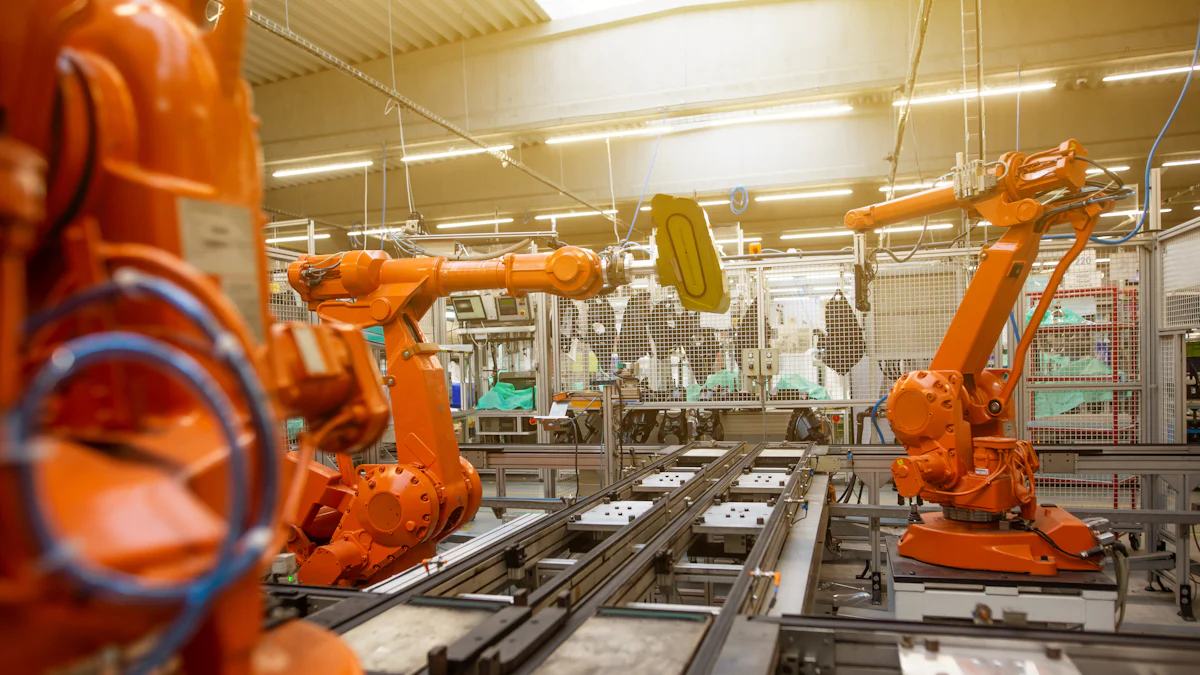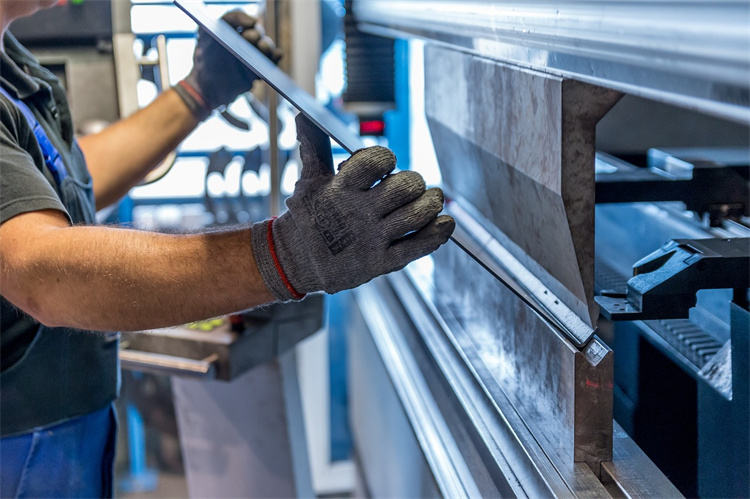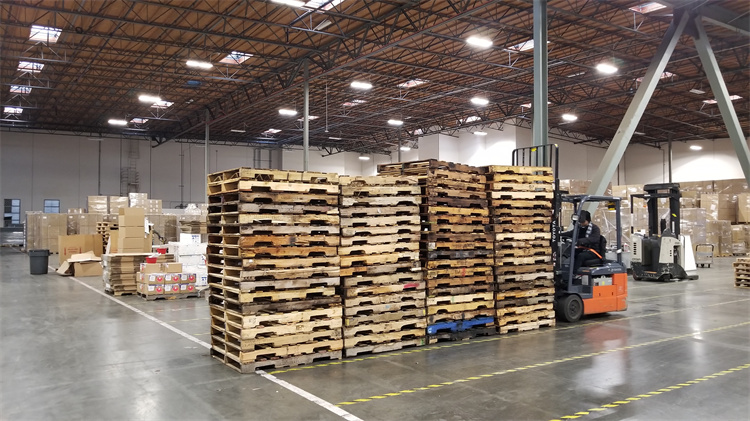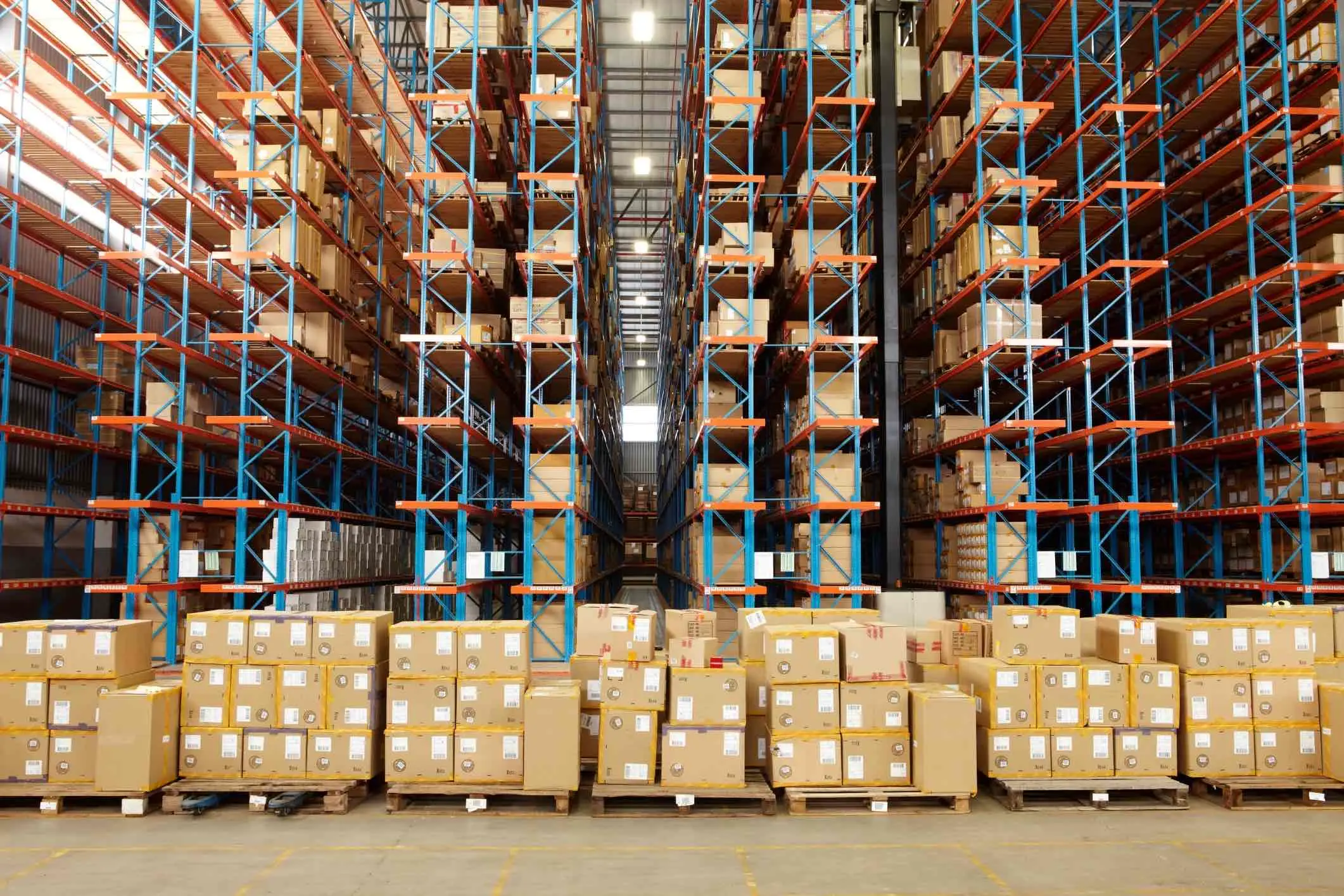What Makes Factories and Warehouses Smarter in 2025

Factories in 2025 rely on advanced technologies to redefine efficiency. AI-powered robots now handle tasks like picking and sorting, adapting to dynamic environments. With 42% of warehouses planning AI investments and 4 million robots expected by 2025, automation transforms operations. Companies like JUSDA lead with intelligent supply chain systems, ensuring seamless logistics.
Key Takeaways
Use AI and machines to work faster and better. Robots with AI can do jobs like sorting items, making fewer mistakes, and saving time.
Use IoT tools to track inventory instantly. Smart devices can alert you when stock is low and help manage supplies better.
Go green to cut your warehouse's pollution. Energy-saving systems and solar or wind power can save money and help the planet.
Key Technologies Transforming Factories and Warehousing

Artificial Intelligence (AI) and Machine Learning in Operations
AI plays a pivotal role in modern warehouse operations. You can use AI algorithms to analyze inventory levels and order patterns, optimizing resource use. This technology automates routine tasks like picking and packing, reducing human error and speeding up processes. AI-powered systems also enable real-time inventory tracking, giving you visibility into stock levels at any moment. Predictive maintenance, driven by machine learning, helps you foresee equipment failures by analyzing data from IoT sensors. This reduces downtime and extends the lifespan of your machinery.
Benefit | Description |
|---|---|
Lower Downtime | Anticipate and address potential issues before they lead to equipment breakdowns. |
Cost-Efficiency | Avoid the financial burden of emergency repairs and unplanned downtime through proactive strategies. |
Longer Equipment Lifecycle | Reduce wear and tear on machinery, allowing it to operate at peak efficiency over an extended period. |
Better Resource Allocation | Identify potential issues in advance to allocate resources more effectively for maintenance activities. |
Safety Improvements | Enhance overall safety by identifying and addressing potential equipment failures early. |
Environmental Sustainability | Reduce waste generation and contribute to energy savings through optimized equipment performance. |
Internet of Things (IoT) for Connected Warehousing
The industrial internet of things connects your warehouse systems, creating a seamless flow of information. IoT solutions track items entering or leaving your facility using automated detection and scanning. Smart sensors help you manage assets by notifying you when stock is low. IoT systems also optimize inventory by analyzing data to inform stock management decisions. Robots equipped with IoT technology move storage racks efficiently, while sensors monitor environmental conditions to ensure product quality. These advancements improve worker safety and enable predictive maintenance, helping you avoid unexpected equipment failures.
Robotics and Warehouse Automation
Robotics has revolutionized warehousing operations. Robots like palletizers automate stacking and unloading, increasing throughput and reducing manual labor. Conveyor systems streamline the movement of goods, while automated storage and retrieval systems enhance space utilization and inventory accuracy. Sorting robots use vision systems to improve order accuracy, and drones assist with inventory management. These technologies reduce labor costs, improve efficiency, and maintain consistent quality. By automating repetitive tasks, robotics allows your employees to focus on more strategic activities.
Advanced Sensors and Predictive Analytics
Advanced sensors are essential for modern warehousing. RFID tags simplify inventory tracking, while environmental sensors monitor temperature, humidity, and light exposure to maintain product quality. Wearable sensors enhance worker safety by identifying potential hazards. Predictive analytics, powered by these sensors, helps you identify inefficiencies and risks. This technology enables you to forecast demand, optimize inventory, and improve customer satisfaction by ensuring timely order fulfillment.
Benefit | Description |
|---|---|
Improved Efficiency | Predictive analytics identifies patterns indicating inefficiencies, allowing for process improvements. |
Cost Reduction | Forecasting demand helps in optimizing inventory, reducing costs associated with excess stock. |
Risk Management | Predictive analytics identifies potential risks, enabling preemptive actions to mitigate disruptions. |
Enhanced Customer Satisfaction | Accurate demand forecasting ensures products are in stock, leading to timely order fulfillment. |
Innovative Practices in Modern Warehousing
Just-in-Time (JIT) Inventory Management
Just-in-Time (JIT) inventory management has become a cornerstone of modern warehousing practices. This strategy ensures that you receive goods precisely when needed, aligning production schedules with supply deliveries. By minimizing excess inventory, JIT reduces storage costs and waste, allowing you to maintain a lean and efficient warehouse. Close coordination with suppliers ensures raw materials and components arrive just in time for production, streamlining inventory handling and improving overall warehouse operations.
However, JIT requires careful planning and robust systems to mitigate risks. Disruptions in the supply chain can stall production, and sudden surges in demand may leave you unable to fulfill orders. Strong supplier relationships and reliable automated warehouse systems are essential to overcoming these challenges. By adopting JIT, you can optimize warehouse storage while maintaining a steady production flow.
Warehouse Management Systems (WMS) and JUSDA's JusLink Platform
Warehouse management systems are revolutionizing modern warehouse solutions. These systems provide real-time inventory control, process automation, and seamless integration with other supply chain tools. For example, JUSDA's JusLink platform enhances visibility across your supply chain by integrating IoT and AI-driven analytics. This allows you to track inventory, automate workflows, and make data-driven decisions.
With features like mobile access and enhanced tracking tools, warehouse management systems simplify complex warehouse operations. JusLink's advanced capabilities ensure you can manage inventory efficiently, reduce errors, and improve overall productivity. By leveraging these systems, you can transform your warehouse into a hub of digital automation and efficiency.
Feature | Description |
|---|---|
Real-time inventory control | Track stock levels in real time to avoid overstocking or stockouts. |
Process automation | Automates workflows such as order picking, packing, and shipping to reduce manual labor. |
Integration with other systems | Seamlessly integrates with ERP and TMS solutions for unified supply chain management. |
Sustainability and Green Warehousing Solutions
Sustainability is a growing focus in modern warehousing. Energy-efficient operations, such as improved lighting and HVAC systems, significantly reduce emissions. Warehouses adopting renewable energy sources like solar panels can drastically lower their carbon footprint. Waste reduction techniques also play a vital role in minimizing resource use and environmental impact.
Globally, green warehousing solutions are setting benchmarks. For instance, Tatu City Logistics Park in Kenya uses energy-efficient lighting and water conservation systems, achieving a 30% reduction in energy consumption. Similarly, Roofings Group in Uganda has implemented solar-powered logistics centers, reducing reliance on grid electricity by 40%. By embracing sustainability, you can enhance your warehouse's environmental performance while reducing operational costs.
Example | Location | Features | Impact |
|---|---|---|---|
Tatu City Logistics Park | Kenya | LEED-certified, energy-efficient lighting, water conservation systems, solar panels | 30% reduction in energy consumption, 20% reduction in water usage |
Roofings Group’s Solar Initiative | Uganda | Solar-powered logistics center, reduced reliance on grid electricity | 40% reduction in reliance on grid electricity, lower carbon footprint |
Benefits of Smarter Factories and Warehousing
Enhanced Speed and Operational Efficiency
Smarter factories and warehouses significantly improve the speed of operations. Automated systems streamline workflows, reducing the time required for tasks like order picking and packing. Robots and automated guided vehicles (AGVs) enhance inbound throughput by quickly moving goods from receiving areas to storage. Advanced technology also shortens order cycle times, ensuring faster delivery to customers.
Metric | Description |
|---|---|
Inventory Accuracy Rate | Measures the percentage of accurately recorded inventory items compared to the actual count. |
Order Picking Accuracy | Assesses the accuracy of orders picked without errors out of the total orders picked. |
Perfect Order Rate | Indicates the percentage of orders fulfilled without any errors, including accurate items and delivery. |
Order Cycle Time | The total time taken to fulfill an order from placement to delivery. |
Inbound Throughput | The rate at which incoming goods are received and made available for storage or processing. |
These metrics highlight how smarter systems optimize efficiency and ensure seamless logistics operations.
Improved Accuracy and Reduced Errors
Modern warehousing systems address common sources of errors in traditional setups. Automated mobile robots (AMRs) reduce mistakes by scanning barcodes and updating inventory in real time. They also improve safety by avoiding collisions and performing hazardous tasks.
AMRs shorten picking routes, reducing walking time for workers.
They navigate efficiently, ensuring precise inventory updates.
Automation minimizes human involvement in repetitive tasks, reducing errors.
By adopting these systems, you can achieve higher accuracy in inventory tracking and order fulfillment, leading to better customer satisfaction.
Cost Optimization and Resource Management
Smarter factories and warehouses help you save costs through better resource allocation and reduced errors. Automated systems optimize storage layouts, allowing you to store more inventory without expanding physical space.
Better space utilization reduces the need for additional storage facilities.
Automation increases operational efficiency, lowering labor costs.
Advanced technology minimizes costly human errors.
Real-time data from smart systems enhances operational visibility, enabling you to allocate resources effectively and reduce waste.
Flexibility and Scalability for Future Growth
Smarter warehousing systems provide the flexibility to adapt to changing demands. Automated solutions allow you to scale operations up or down based on market conditions. For example, real-time inventory tracking ensures you can respond quickly to demand fluctuations. This adaptability positions your warehouse for long-term growth while maintaining efficiency.
By integrating advanced systems, you can future-proof your logistics operations and stay competitive in a dynamic market.
Future Trends in Factories and Warehousing

5G Connectivity for Real-Time Data Sharing
5G technology is transforming how you manage your warehouse. Its high-speed connectivity enables real-time data sharing, which enhances automation by allowing autonomous systems to coordinate seamlessly. IoT sensors in your warehouse can now provide instant updates on inventory levels, helping you make faster decisions. Communication between devices becomes more reliable, ensuring smooth operations across all systems.
With 5G, you can track goods as they move through your warehouse, reducing delays and improving accuracy. This connectivity also supports advanced robotics, enabling them to operate with precision. By adopting 5G, you position your warehouse for future advancements in automation and data-driven decision-making.
Green Warehousing and Carbon-Neutral Facilities
Sustainability is shaping the future of warehousing. Carbon-neutral facilities aim to reduce emissions through energy-efficient technologies and renewable energy sources. However, achieving this goal presents challenges:
Infrastructure limitations, like a lack of EV charging stations, hinder progress.
Regulatory complexity adds layers of difficulty.
Technological barriers may arise when integrating new systems.
Behavioral change among employees demands effective training.
Supply chain coordination requires collaboration with multiple stakeholders.
Despite these challenges, green warehousing offers long-term benefits. Energy-efficient lighting and solar panels lower operational costs while reducing your carbon footprint. By embracing sustainable practices, you contribute to a cleaner environment and align with global trends.
Blockchain for Transparent Supply Chains
Blockchain technology is revolutionizing supply chain transparency. It creates a tamper-evident ledger, ensuring data integrity and fostering trust among stakeholders.
Blockchain enables a "zero trust" environment, where all parties rely on verified data.
Immutable records ensure that no one can alter transaction details.
A single source of truth simplifies audits and verifications.
Blockchain tracks products in real time, recording every step in the supply chain. This visibility ensures that all transactions are transparent and traceable, building trust across the network.
Real-world examples highlight its impact. Walmart uses blockchain to trace leafy greens, reducing trace time from a week to two seconds. Pfizer improves pharmaceutical security with immutable records. Ford tracks auto parts through its Automotive Blockchain Consortium. By adopting blockchain, you enhance supply chain efficiency and transparency, preparing your warehouse for the future.

JUSDA Solutions
To provide you with professional solutions and quotations.
Factories and warehouses in 2025 redefine efficiency and sustainability. Automation, including AR-enabled wearables and advanced systems, enhances safety and decision-making. Energy-efficient facilities and collaborative logistics reduce emissions. Real-time tracking and IoT adoption optimize operations. These innovations position your warehouse as a leader in eco-friendly, connected supply chain management.
See Also
Exploring Automation Benefits in Modern Manufacturing Warehouses
Understanding Robotic Automation's Role in Warehouse Efficiency
Enhancing Supply Chains Through Innovative AI Solutions
